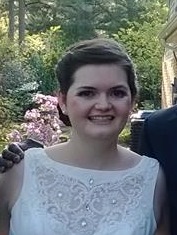A Q&A with Kiley Workman Diop, technical advisor for the SIAPS Program
You took courses in gender studies in college. How has that shaped your work?
It has shaped my work a lot! My background in public health is rooted in the social aspects of health. Social determinants like income, gender, race, class, faith, sexuality, and national origin all interact with each other and with biology to drive a person’s health and well-being.
In the SIAPS Program, we have staff with backgrounds ranging from pediatrics to logistics, and my knowledge and skillset has added to our diversity of thinking. For instance, it comes naturally for me to see pharmaceutical systems through a gender lens, so I’ve been able to add that value to our work. I’m proud to have been able to help build the capacity of my colleagues in gender integration, just as they have for me with pharmacovigilance, regulatory systems, and other aspects of pharmaceutical systems strengthening.
How does attention to gender figure into the work SIAPS does in strengthening pharmaceutical systems?
In public health, when you’re designing an intervention you’re trying to think broadly about what’s going to help the whole population. But you also need to pay special attention to vulnerable groups, including groups that derive their vulnerability from their gender. In a broad sense, it’s about equity—if half the population (whether men or women, boys or girls) isn’t being served appropriately by our interventions, that dilutes SIAPS’s success and we miss out on achieving equitable access to medicines and services that help save lives. We have to think about gender to ensure equitable access to quality care.

For example, sometimes commodities that focus on women’s health—particularly maternal health—are overlooked when putting together a national essential medicines list or aren’t included in the national procurement. SIAPS works at the national and global levels to try to resolve this issue so that all women have access to basic commodities, which can save their lives when they face childbirth complications.
In terms of capacity building, most of our trainings and workshops have a mix of men and women participants. And our pharmaceutical information management system tools collect patients’ sex, which you can then use to run reports. So you could see, for example, data on follow-up visits for antiretroviral therapy for men versus women. If you see some kind of difference at the national, regional, or local level, then you know that you need to investigate what is stopping men or women from picking up their medicines.
Men have special risks, too, right?
Yes. Gender is not solely about women. Men and women, boys and girls, and transgender individuals have unique needs, and public health professionals need to identify and address them to have the greatest health impact.
The TB burden in men is particularly fresh in my mind because I attended a symposium focused on this topic at the 2016 Union Conference. At the global level, men account for the majority of TB cases and deaths—you see these numbers change a bit at the national and subnational levels, but anyone who has worked with TB on the ground has seen this for themselves. The symposium illustrated men’s burden with quantitative and qualitative data and gave examples of how masculinity can create barriers to seeking care and staying on TB treatment. It’s about needing to be perceived as a strong man, a provider for your family, and how illness impairs that, particularly TB. All of that is to say that men and women both have barriers to access because of their gender.
Can you tell us about a SIAPS activity that had particular impact?
I can’t speak to health impact, but I will say that I’m impressed every day by SIAPS’s work all over the world! If I had to pick a particularly impressive activity that took gender into account, what immediately comes to mind is our work with the Barangay Health Management Councils—BHMCs—in Quezon City in the Philippines, which bring together community-based groups, officials, and health providers to improve TB control program management and results. Through partnerships with the BHMCs and their community health centers, SIAPS implemented a routine TB screening program for pregnant women as part of their prenatal care. Now, the context of this is what makes it even more stellar. Barangays are urban-poor settlements, and many of the community-based groups in the BHMCs are represented by women. In the Philippines, decision making tends to take place at the highest levels of leadership, and there aren’t many women at that level. So this intervention not only brings women in a low-income setting into decision making, but it has also been shown to be advantageous for women’s health because it led to TB screening for pregnant women. This program will help improve early TB case detection and referral to treatment for pregnant women.
What’s the biggest advance to come along in past decade to help ease gender-based disparities?
Definitely universal health coverage, or UHC. The global health community has been talking about UHC for ages and reinforced its importance in the Sustainable Development Goals, so this is not really a new advance per se. That being said, I’m happy to see the progress we’ve made by focusing on universal health coverage at the global level and actually implementing it in countries. UHC is inherently about getting to everyone, including the most vulnerable people, and making sure that they have affordable coverage for basic health needs. You can’t achieve UHC without thinking about gender. You have to address unique health needs and barriers to access for men and women, boys and girls to accomplish health for all.
Interview by Stacy Lu, SIAPS Technical Writer

